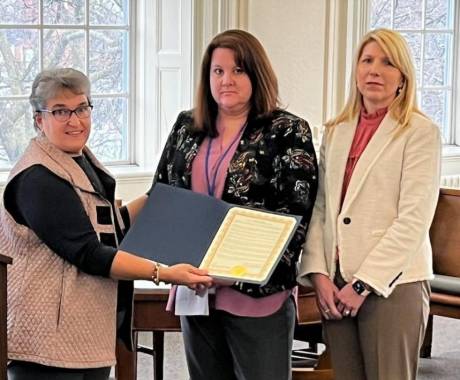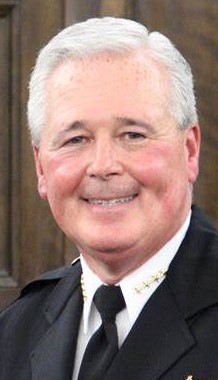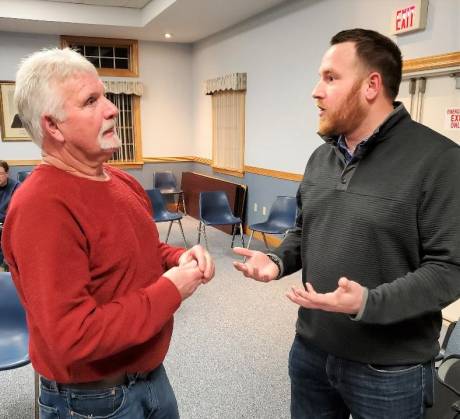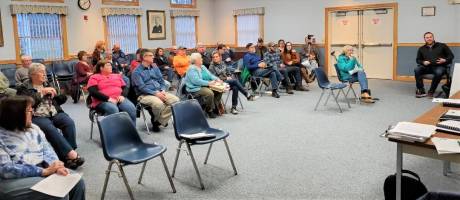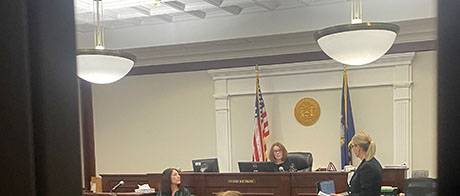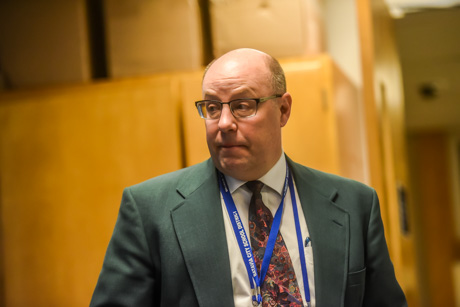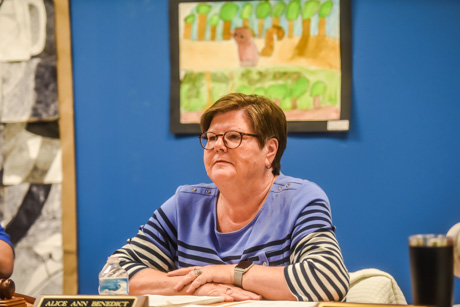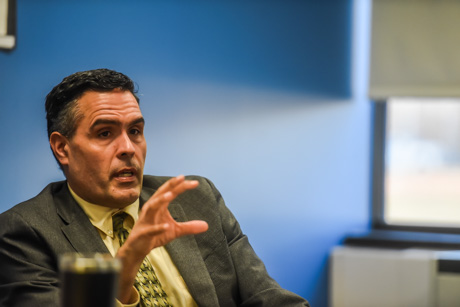Brother and sister team in Le Roy creates peer-to-peer tutoring program that is raising grades

Watching fellow students learn and grow because of the help you've given them and the friendship you've shown them is one of the most satisfying things in life, Evelyn Babcock told trustees of the Le Roy Central School District on Monday night.
She recalled her interaction with one boy she tutored through a program called Knights Academic Access Program that she co-founded with her twin brother Brett Babcock.
"'I don't like it (school),'" she recalled a boy telling her. "It's boring." She added, exacerbated, "Oh, eighth-grade boys," eliciting laughter from the board, then she continued, "It's rewarding watching someone go from 19 in social studies to a 91 ... he was like ‘hey, this kind of isn’t that bad.’
"So to watch that drive sparked again, to see that drive and motivation and understanding organizational skills and understanding not just the academic portion but understanding optimism and attitude and energy and things like that that go into it, and watching a light go off in their eyes, is one of the most rewarding experiences I could ever say I had yet so far in high school."
Brett and Evelyn are highly motivated students. They both have scholarships for Ohio State. Evelyn is set on attending Ohio. She's even named her car "Scarlett" (one of the school's colors -- "I'm a bit obsessed," she told the board). But she doesn't know what she will major in. She has "10,000 interests," she said. Brett is a little less sure about Ohio but he's set on entering pre-med and becoming a doctor.
With that degree of motivation, they found the options available for programs to help them meet their community service requirements were less than satisfying.
"My brother and I were looking for a way to give back going beyond painting rocks or chalk art on sidewalks," Evelyn told the board. "It’s pretty and all but our time is very valuable to us because we don’t have much of it and we're always busy so we wanted to put as much efficiency into our time as possible. We started contacting things like Big Brother/BigSister programs and trying to find a way and we were contacting everyone and there was no response, no results, so we were like, you know what, we’re going to start our own program. Why not just start something?"
Sophomores at the time, it was the start of the pandemic. It might be surprising that such motivated students felt they were falling behind academically.
They thought if that was happening to them, what about students who were already doing poorly in school? So they decided to start a peer-to-peer tutoring program.
The twins contacted every person they knew, from administrators to fellow students, to try and get a tutoring program going.
Of course, the school supported it. They cite former principal Tim McArdle especially for helping get the fledgling program off the ground, but say also Kelly Ronan, Austin Dwyer, and Jen Bertrand were supportive as well.
The reason the program has been successful, Brett told the board, is because it's student-run and there is a strong emphasis on tutors and the younger students building a friendship.
"It's not just tutoring," Brett said. "It's about having friends and having mentors."
"If we just made a tutoring program where you show up after school and you don't want to go to tutor but you're spending 45 minutes after school, I don't think it would be as successful, he said. "We both preach, get a kid, stick with them, build a foundation, because it will be rewarding when you see them succeed in school but also see them laugh."
There are about 20 other student tutors and currently about 20 students being tutored. And some of those tutors are ready to lead the program next year, Brett said, explaining that he's not worried about it going away after he and his sister graduate.
Not everyone who wants to be a tutor gets to be a tutor, Evelyn said. There have been some sophomores who have applied to become tutors but they need to display both academic success and maturity.
If sophomores are accepted, they tutor students younger than those typically assigned to juniors and seniors so that the tutor can maintain a level of separation and authority.
"The level of maturity needs to be there because you are impacting somebody’s life greatly, so we don’t want to be like, ‘hey, I want to be a tutor.’ No. That’s not how it’s going to work," Evelyn said.
Some students just need help at the end of a marking period. Others need help all year. Either way, the program is making a difference, the siblings said.
"We even get messages from their parents saying how it’s not just in school but at home, you can see their confidence rise due to they believe in themselves," Brett said. "They have a little bit more self-confidence because they see their grades rising and they can say, ‘I can actually do this.” It’s so rewarding and it really shows how just a little step — this isn’t a huge program but for some people it is. if you can save one person and help them grow as a person I would consider that win."
The board members were duly impressed.
"What you’re doing is awesome," said Trustee Rich Lawrence. "You're planting seeds and those seeds are going to grow."
Vice President Denise Duthe said, "We're so so proud of you. The fact that you saw or thought that this was going to be something that people needed, and putting hours and hours into it is just outstanding."
The plaudits were followed by a round of applause from board members and administrators.
Top photo: Brett and Evelyn Babcock present their tutoring initiative to Le Roy Central School Board during a meeting on Tuesday.


